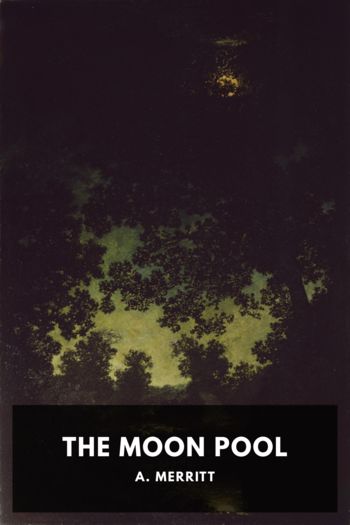Short Fiction - H. P. Lovecraft (i can read book club .TXT) 📗

- Author: H. P. Lovecraft
Book online «Short Fiction - H. P. Lovecraft (i can read book club .TXT) 📗». Author H. P. Lovecraft
What remains to be told is very brief, and may be familiar to you from the newspaper accounts. The police heard a shot in the old Tillinghast house and found us there—Tillinghast dead and me unconscious. They arrested me because the revolver was in my hand, but released me in three hours, after they found that it was apoplexy which had finished Tillinghast and saw that my shot had been directed at the noxious machine which now lay hopelessly shattered on the laboratory floor. I did not tell very much of what I had seen, for I feared the coroner would be skeptical; but from the evasive outline I did give, the doctor told me that I had undoubtedly been hypnotised by the vindictive and homicidal madman.
I wish I could believe that doctor. It would help my shaky nerves if I could dismiss what I now have to think of the air and the sky about and above me. I never feel alone or comfortable, and a hideous sense of pursuit sometimes comes chillingly on me when I am weary. What prevents me from believing the doctor is this one simple fact—that the police never found the bodies of those servants whom they say Crawford Tillinghast murdered.
The Shunned House IFrom even the greatest of horrors irony is seldom absent. Sometimes it enters directly into the composition of the events, while sometimes it relates only to their fortuitous position among persons and places. The latter sort is splendidly exemplified by a case in the ancient city of Providence, where in the late forties Edgar Allan Poe used to sojourn often during his unsuccessful wooing of the gifted poetess, Mrs. Whitman. Poe generally stopped at the Mansion House in Benefit Street—the renamed Golden Ball Inn whose roof has sheltered Washington, Jefferson, and Lafayette—and his favorite walk led northward along the same street to Mrs. Whitman’s home and the neighboring hillside churchyard of St. John’s, whose hidden expanse of eighteenth century gravestones had for him a peculiar fascination.
Now the irony is this. In this walk, so many times repeated, the world’s greatest master of the terrible and the bizarre was obliged to pass a particular house on the eastern side of the street; a dingy, antiquated structure perched on the abruptly rising side hill, with a great unkempt yard dating from a time when the region was partly open country. It does not appear that he ever wrote or spoke of it, nor is there any evidence that he even noticed it. And yet that house, to the two persons in possession of certain information, equals or outranks in horror the wildest fantasy of the genius who so often passed it unknowingly, and stands starkly leering as a symbol of all that is unutterably hideous.
The house was—and for that matter still is—of a kind to attract the attention of the curious. Originally a farm or semi-farm building, it followed the average New England colonial lines of the middle eighteenth century—the prosperous peaked-roof sort, with two stories and dormerless attic, and with the Georgian doorway and interior panelling dictated by the progress of taste at that time. It faced south, with one gable end buried to the lower windows in the eastward rising hill, and the other exposed to the foundations toward the street. Its construction, over a century and a half ago, had followed the grading and straightening of the road in that especial vicinity; for Benefit Street—at first called Back Street—was laid out as a lane winding amongst the graveyards of the first settlers, and straightened only when the removal of the bodies to the North Burial Ground made it decently possible to cut through the old family plots.
At the start, the western wall had lain some twenty feet up a precipitous lawn from the roadway; but a widening of the street at about the time of the Revolution sheared off most of the intervening space, exposing the foundations so that a brick basement wall had to be made, giving the deep cellar a street frontage with door and one window above ground, close to the new line of public travel. When the sidewalk was laid out a century ago the last of the intervening space was removed; and Poe in his walks must have seen only a sheer ascent of dull gray brick flush with the sidewalk and surmounted at a height of ten feet by the antique shingled bulk of the house proper.
The farm-like ground extended back very deeply up the hill, almost to Wheaton Street. The space south of





Comments (0)